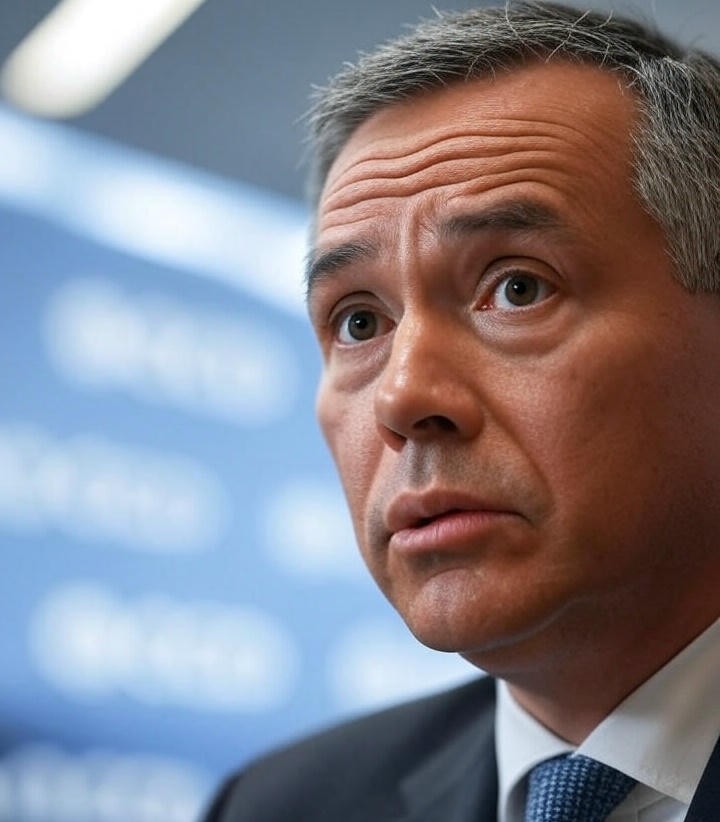The Organisation for Economic Co-operation and Development (OECD) has issued a warning about the future of the global economy. According to its latest forecast global GDP growth is expected to slow down to 2.9% in both 2025 and 2026. This is a significant drop and has caught the attention of economists, businesses and investors around the world.
One of the major reasons for this slowdown is the rise in trade tariffs especially in the United States under former President Donald Trump’s policies. These increased tariffs are making international trade more expensive and uncertain which affects global supply chains and overall business confidence.

What Is the OECD?
The OECD is an international organization made up of 38 countries including the U.S., the U.K., Germany, France and Japan. It works to improve the global economy and promote policies that lead to growth development and stability.
Every year the OECD releases economic forecasts and reports based on data from around the world. These forecasts help governments, businesses and investors plan for the future.
Why Did the OECD Cut Its Global Growth Forecast?
The OECD has lowered its global growth forecast to 2.9% for 2025 and 2026 which is a clear sign of concern. There are several reasons behind this downgrade:
- Rising Trade Barriers: The U.S. has increased tariffs on many imported goods. This makes goods more expensive and slows down trade between countries.
- Slowing Business Investment: Companies are becoming more cautious about investing in new projects due to uncertainty in the global market.
- Weaker Consumer Spending: High inflation and interest rates in many countries are making it harder for people to spend money which slows down economic activity.
- Global Supply Chain Disruptions: Higher tariffs and new trade rules are affecting how products move across countries leading to delays and higher costs.
What Are Tariffs and Why Do They Matter?
Tariffs are taxes that a country puts on goods imported from other countries. When tariffs go up the cost of imported goods also goes up. This can lead to higher prices for consumers and businesses.
For example if the U.S. puts a tariff on steel from China American companies that use steel to make cars or appliances will have to pay more. They may pass these extra costs on to consumers or cut back on hiring and investment.
U.S. Tariff Rate Now Highest Since 1938
The OECD pointed out that the effective U.S. tariff rate has now risen to 15.4% the highest it has been since 1938 during the Great Depression era. This is a major shift from the past few decades when global trade was becoming more open and connected.
These higher tariffs have been introduced mainly during and after Donald Trump’s presidency with policies aimed at protecting American industries and reducing the trade deficit. While this may help some domestic businesses it also risks hurting the global economy by making trade more difficult and costly.
Impact on Global Supply Chains
In today’s world, products are rarely made in just one country. For example a smartphone might be designed in the U.S., have parts made in South Korea and Japan be assembled in China and sold in Europe. These are global supply chains.
When tariffs are increased it becomes harder and more expensive to move parts and products across borders. This creates delays reduces efficiency and increases prices for consumers everywhere.
What This Means for Ordinary People
You might wonder “How does this affect me?” Even if you’re not involved in international trade a slowdown in the global economy can impact your daily life in several ways:
- Higher Prices: Imported goods, like electronics, clothing, or cars may become more expensive.
- Fewer Job Opportunities: Businesses facing higher costs may delay hiring or cut jobs.
- Lower Investment Returns: If you have investments or a retirement fund a weaker global economy may hurt your returns.
- Slower Wage Growth: In a weaker economy companies may freeze salaries or give smaller raises.
What Can Be Done?
The OECD suggests that governments need to take action to support the global economy. Here are some of their recommendations:
- Lower Trade Barriers: Countries should work together to reduce tariffs and make trade smoother and fairer.
- Encourage Investment: Policies that make it easier for businesses to invest can help boost productivity and create jobs.
- Focus on Green Growth: Investing in renewable energy and sustainable practices can help long-term economic growth and fight climate change.
- Support Households: In tough times governments should offer targeted support to low income households to help with rising costs.
Final Thoughts
The OECD’s warning about a global economic slowdown is a serious one. With global GDP expected to grow only 2.9% in 2025 and 2026 the world may be facing a period of slower growth, uncertainty and higher costs.
The rise in U.S. tariffs especially under former President Donald Trump’s policies is a key factor behind this slowdown. These trade barriers are disrupting global supply chains hurting business confidence and making goods more expensive for everyone.
While governments and businesses have a role to play in fixing these issues it’s important for individuals to stay informed manage their finances wisely, and prepare for economic changes ahead.
